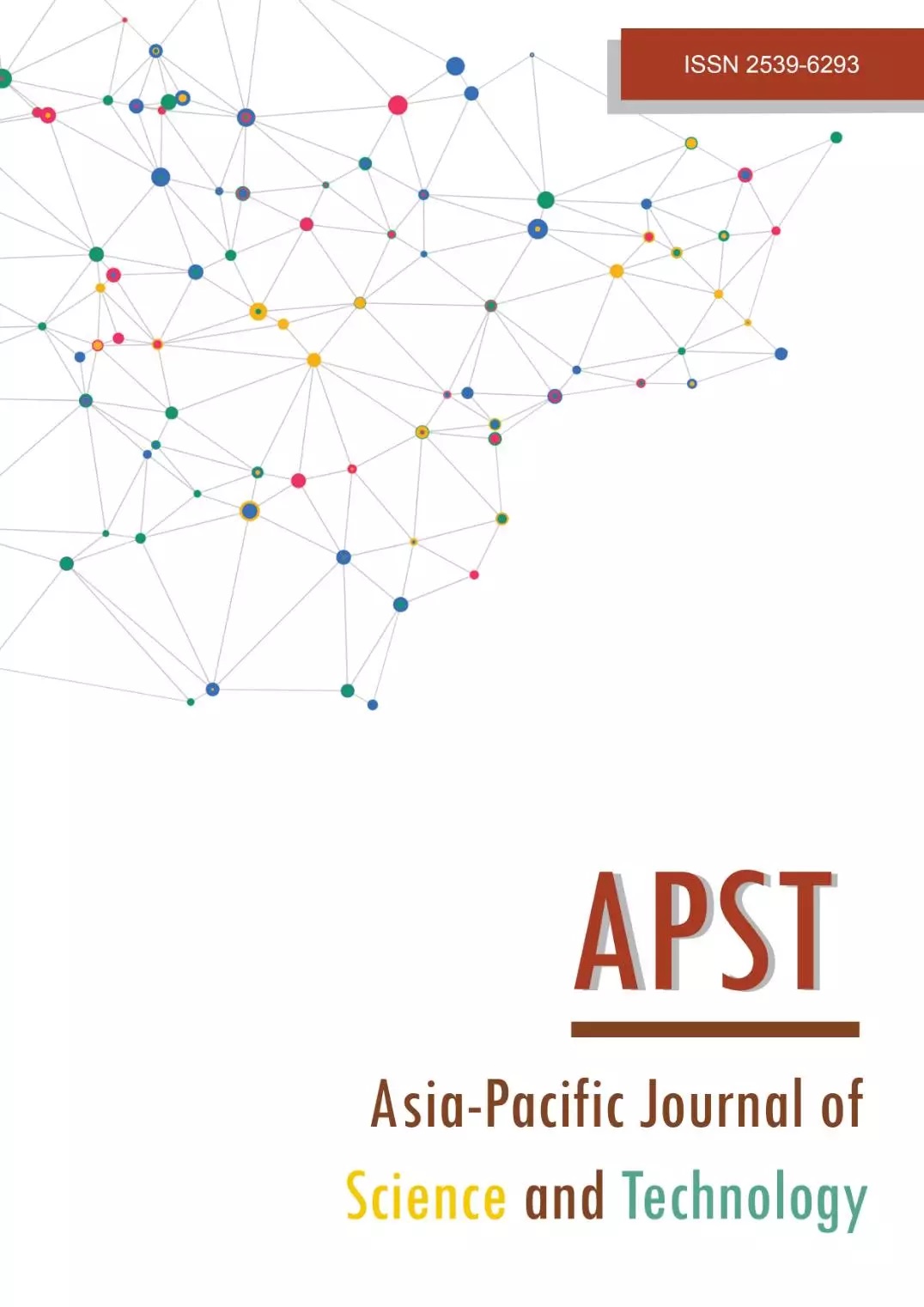Risk factors of work-related neck and shoulder pain among emergency nurses
Main Article Content
Abstract
Emergency (ER) nurses are prone to work-related neck pain (WNP) and work-related shoulder pain (WSP). This study aimed to determine risk factors associated with WNP and WSP among ER nurses in Thailand. A total of 240 emergency nurses from 10 regional tertiary hospitals in the northeast of Thailand completed a self-administered questionnaire, which included questions on demographic and work characteristics, experiences of work stress, and WNP and WSP. Multiple logistic regression analyses were used to analyse the significant risk factors of WNP and WSP, using an adjusted odds ratio (ORadj) and a p-value < 0.05. The 12-month prevalence of WNP and WSP in emergency nurses was 37.5% and 49.6%, respectively. Risk factors significantly associated with WNP included having worked in the ER >10 years (ORadj = 2.42, 95% CI: 1.17-4.99); having performed cardiopulmonary resuscitation (CPR) (ORadj = 1.87, 95% CI: 1.01-3.47); and a high level of stress at work (ORadj = 3.53, 95% CI: 1.65-7.58). Risk factors associated with WSP were being female (ORadj = 2.17, 95% CI: 1.05-4.48); neck bending (ORadj = 2.28, 95% CI: 1.13-4.62); and a high level of work stress (ORadj = 3.45, 95% CI: 1.79-6.66). Emergency nurses in Thailand presented with both WNP and WSP. Personal factors, >10 years of working in ER, performing CPR and bending the neck, and high work stress contributed to both WNP and WSP. The results call for the need to put into place relevant safety measures and routine ergonomic assessments and address work-related stress in public regional hospitals to reduce the prevalence of neck/shoulder pain and job-related stress among ER nurses.
Article Details

This work is licensed under a Creative Commons Attribution-NonCommercial-NoDerivatives 4.0 International License.
References
Dangsuwan K, Boonyoung N, Apichato A. Core competencies of accident and emergency nurses as perceived by nurses in hospitals under the Ministry of Public Health in the three southern border provinces. Songkla Med J. 2008;26(3):227-237.
Sorour AS, Maksoud MAE. Relationship between musculoskeletal disorders, job demands, and burnout among emergency nurses. Adv Emerg Nurs J. 2012;34(3):272-282.
Sarpong KB, Ameyaw E, Duku FA. Musculoskeletal disorders among emergency nurses at the Komfo Anokye teaching Hospital, Kumasi, Ghana. Am J Med Public Health. 2020;1(1):1-4.
Bolarinde OS, Oyewole I, Abobarin AF. Work-related musculoskeletal disorders among nurses in various specialty areas in a Nigerian tertiary health institution. J Emerg Pract Trauma. 2019;5(2):41-46.
Habibi E, Pourabdian S, Atabaki AK, Hoseini M. Evaluation of work-related psychosocial and ergonomics factors in relation to lower back discomfort in emergency unit nurses. Inter J Prev Med. 2012;3(8):564-568.
Anap BD, Iyer C, Rao K. Work-related musculoskeletal disorders among hospital nurses in rural Maharashtra, India: a multi-center survey. Inter J Res Med Sci. 2013;1(2):101-107.
Luemongkol R, Chaiklieng S. Musculoskeletal disorders and work stress among emergency nurses at the regional hospital in the Northeast of Thailand. Srinakarind Med J. 2014;29(6):516-523.
Thinkhamrop W, Sawaengdee K, Tangcharoensathien V, Theerawit T, Laohasiriwong W, Saengsuwan J, Hurst CP. Burden of musculoskeletal disorders among registered nurses: evidence from the Thai nurse cohort study. BMC Nurs. 2017;16(68):1-9.
Occupational Safety and Health Administration [Internet]. Facts about hospital worker safety [updated 2013 Sep; cited 2021 Jan 31]. Available from: https://www.osha.gov/dsg/hospitals/documents/1.2_Factbook_508.pdf
Luemongkol R, Chaiklieng S. Risk factors associated with low back pain among emergency nurses at the regional hospital in the northeast of Thailand. JMPTP. 2015;27(3);278-286.
Singh LP. Prevalence of MSDs among nurses: a study in Indian health care industry. Ergonomics Inter J. 2018;2(3):000149.
Habibi E, Pourabdian S, Atabaki AK, Hoseini M. Evaluation of work-related psychosocial and ergonomics factors in relation to lower back discomfort in emergency unit nurses. Inter J Prev Med. 2012;3(8):564-568.
Strategy and Planning Division, Ministry of Public Health, Thailand [Internet]. National strategy plan for health; national economic and social development planning volume 11 (2012-2016) [updated 2016 Dec 31; cited 2020 Jan 15]. Available from: http://bps.moph.go.th/new_bps/.
Daniel WW. Biostatistics: a foundation for analysis in the health sciences. 7th ed. New York: John Wiley & Sons;1999.
Choobineh A, Movahed M, Tabatabaie SH, Kumashiro M. Perceived demands and musculoskeletal disorders in operation room nurses of Shiraz city hospitals. Ind Health. 2010;48(1):74-84.
Department of Health, Ministry of Public Health. Working health promotion manual, 6th ed. Nonthaburi: Ministry of Public Health; 2007.
Vanwonterghem K, Verboven J, Cloostermans M. Subjective workload index. J Ergonom. 1985;10:10-14.
Chaiklieng S. Health risk assessment on musculoskeletal disorders among potato-chip processing workers. PLoS ONE. 2019;14(12):e0224980.
Trinkoff AM, Lipscomb JA, Brown HJ, Storr CL, Brady BA. Perceived physical demands and reported musculoskeletal problems in registered nurses. Am J Prev Med. 2003;24:270-275.
Carugo M, Pesatori AC, Ferrario MM, Ferrari AL, Silva FJ, Martins AC, et al. Physical and psychosocial risk factors for musculoskeletal disorders in Brazilian and Italian nurses. Cad Saude Publica. 2012;28(9):1632-1642.
European Agency of Safety and Health at Work. OSH in Figures: Work-related musculoskeletal in the EU-Facts and Figures. 1st ed. Luxembourg: Publications office of the European Union; 2010.
Anandacoomarasamy A, Caterson I, Sambrook P, Frasen M, March L. The impact of obesity on the musculoskeletal system. Int J Obes (Lon). 2008;32(2):211-222.
Smedley J, Inskip H, Trevelyan F, Buckle P, Cooper C, Coggon D. Risk factors for incident neck and shoulder pain in hospital. Occup Environ Med. 2003;60:864-869.
Canadian Center for Occupational Health and Safety [Internet]. Musculoskeletal disorders-psychosocial factors [updated 2020 Nov 23; cited 2021 Feb 1]. Available from: http://www.ccohs.ca/oshanswers/psychosocial/musculoskeletal.html.
Neupane S, Nygard CH, Oakmand J. Work-related determinants of multi-site of musculoskeletal pain among employees in the health care sector. Work. 2016;54(3):689-697.


